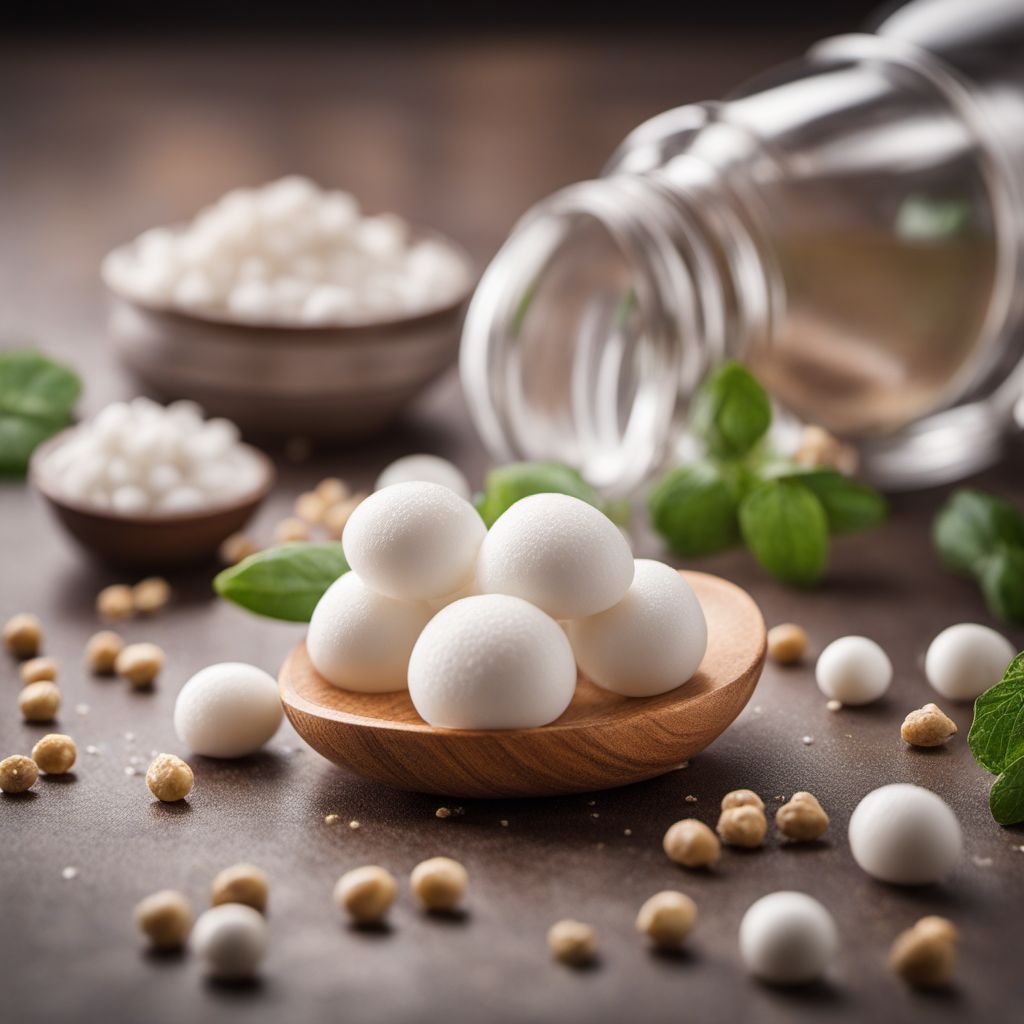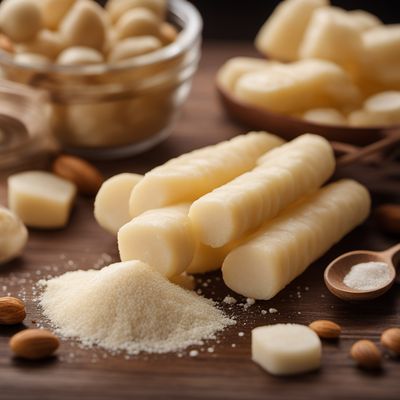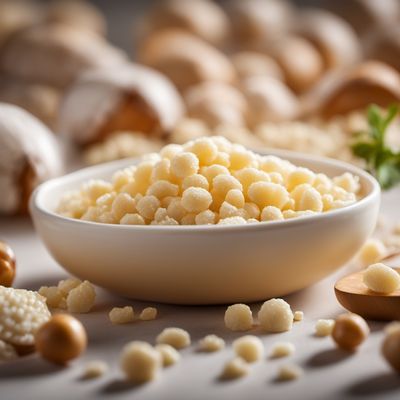
Ingredient
Xylitol
The Sweet Tooth's Ally
Xylitol is a sugar alcohol derived from plants like birch trees and corn. It has a sweet taste similar to sugar but with fewer calories and a lower glycemic index. Xylitol is a white, crystalline powder that dissolves easily in liquids.
Origins and history
Xylitol has been used as a sweetener for centuries, particularly in Finland and other Nordic countries. It gained popularity as a sugar substitute due to its dental benefits, as it doesn't promote tooth decay like regular sugar. Today, xylitol is widely used in various food products and oral care items.
Nutritional information
Xylitol is a low-calorie sweetener that contains about 40% fewer calories than sugar. It also doesn't raise blood sugar levels as much as regular sugar, making it a suitable option for individuals with diabetes. Additionally, xylitol has been shown to have dental benefits, as it inhibits the growth of bacteria that cause tooth decay.
Allergens
Xylitol may cause digestive issues, such as bloating or diarrhea, when consumed in large amounts. It is toxic to dogs, so it should be kept away from pets.
How to select
When purchasing xylitol, look for brands that are made from non-GMO sources and have a reputable manufacturing process. Opt for pure xylitol without any additives or fillers. It should have a fine, crystalline texture and a sweet aroma.
Storage recommendations
To maintain the freshness and quality of xylitol, store it in an airtight container in a cool, dry place. Avoid exposure to moisture, as it can cause clumping. Xylitol has a long shelf life and can be stored for several years.
How to produce
Xylitol is produced through a process called hydrogenation, where natural plant fibers are converted into a sweet-tasting alcohol. This alcohol is then further processed to obtain xylitol crystals.
Preparation tips
Xylitol can be used as a sugar substitute in a wide range of recipes, including baked goods, beverages, and desserts. It can also be used to sweeten sauces, dressings, and marinades. However, it is important to note that xylitol may have a cooling effect when used in large quantities.
Substitutions
Erythritol, stevia, and monk fruit extract are suitable substitutes for xylitol, offering similar sweetness without the potential digestive side effects. However, they may have slightly different flavor profiles.
Culinary uses
Xylitol is commonly used in sugar-free chewing gums, candies, and oral care products like toothpaste and mouthwash. It is also used in diabetic-friendly food products and beverages.
Availability
Xylitol is widely available in most grocery stores, health food stores, and online retailers. It is commonly found in the baking aisle or with other sweeteners.
More ingredients from this category

Erythritol
Natural Sugar Substitute

Other polyols
The Sweet Side of Sugar Substitutes: Exploring Other Polyols

Maltitol
The Sweet Secret: Maltitol

Lactitol
"The Sweet Secret: Exploring the Versatility of Lactitol"

Mannitol
The Sweet Alcoholic Sugar

Sorbitol
Sweetener with a Twist

Isomalt
The Sweet Secret: Isomalt
Recipes using Xylitol » Browse all

Mauritian Spiced Potato Stew
Exotic Mauritian Potato Delight

Sayur Lodeh with Tempeh and Coconut Milk
Indonesian Delight: Tempting Sayur Lodeh with Creamy Coconut Milk

Taoist Berthoud
Harmony in a Pot: Taoist Berthoud

Tianjin-style Pistou Soup
Savory Herb Soup with a Tianjin Twist

Chifa-style Yam Kun Chiang
Peruvian-inspired Yam Kun Chiang: A Fusion of Thai and Chifa Flavors

Monégasque-style Quinoa Salad
Quinoa Delight: A Taste of Monégasque Cuisine

Bavarian-style Pwa Sos (Bean Sauce)
Bavarian Delight: Hearty Bean Sauce with a Bavarian Twist

Chiuchow-style Spicy Black Bean Stew
Fiery Black Bean Delight: Chiuchow-style Spicy Stew

Traditional Bánh Chưng Recipe
Hearty Rice Dumplings: A Vietnamese Delicacy

Andorran-style Tavče Gravče
Savory Bean Delight: Andorran-style Tavče Gravče

Authentic Mexican Mole with a Twist
Savory and Spicy Chocolate Infused Mole

Dorset-inspired Golden Rice
Sunshine on a Plate: Dorset's Golden Rice Delight